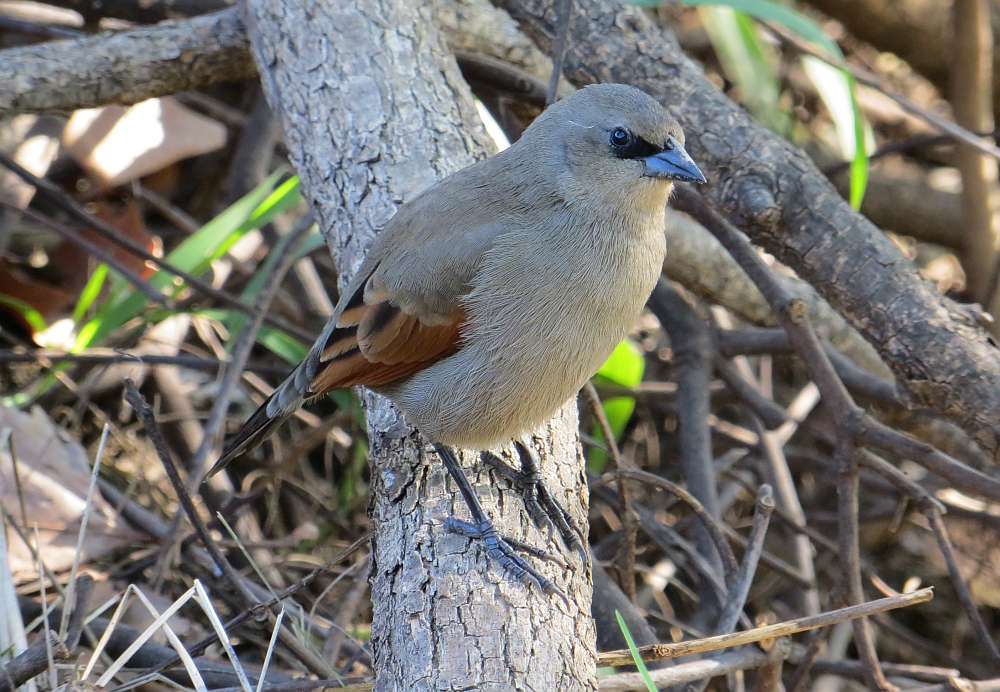
Agelaioides badius
TAXONOMY
Agelaius badius Vieillot, 1819, Parguay. There are two geographically
discrete forms. Many treat the pale baywing (A. fringillarius)
as a third subspecies.
OTHER COMMON NAMES
English: Bay-winged cowbird; French: Vacher а ailes baies;
German: Braunkuhstдrling; Spanish: Mъsico, Tordo Mulato.
PHYSICAL CHARACTERISTICS
7–7.5 in (18–19 cm); 1.4–1.8 oz (41–50 g). Sexes similar in
color. Olive-gray, dusky between the bill and the eye, blackish
tail, and blackish wings broadly edged with rufous. They have
a short conical bill. Juveniles resemble adults.
DISTRIBUTION
Resident in northeastern Brazil, and northern and eastern Bolivia
south through western and central Paraguay, Uruguay, to
central Argentina.
HABITAT
Open, wooded, or shrubby terrain and adjacent pastures.
Found to 9,500 ft (2,880 m) in Bolivia.
BEHAVIOR
This is a social blackbird, typically found in small groups of
four to 25 individuals. They roost communally. Baywings sing
frequently, but unlike most blackbirds, song is not accompanied
by displays. They sing from a perch, and often from near
the nest.
FEEDING ECOLOGY AND DIET
They feed both in trees, where they glean for insects, and on
the ground, generally near woodland or shrubby cover.
REPRODUCTIVE BIOLOGY
Socially monogamous. Baywings most commonly use the abandoned
nest of another species. Covered nests are preferred,
such as the nests of ovenbirds (Furnariidae); they will nest in
woodpecker holes and in nest boxes, and they do sometimes
build their own cup-shaped nests. Clutch size is generally 4–5
eggs, which are laid late November–early January. They are
cooperative breeders and one or more “helpers” will help raise
the young. They are frequently parasitized by screaming cowbirds
(Molothrus rufoaxillaris), making it difficult to obtain accurate
information on clutch size, and incubation and fledging
times because the baywings often suspend nesting to reduce
parasitism.
CONSERVATION STATUS
Not threatened. They are common to fairly common.
SIGNIFICANCE TO HUMANS
None known.
Photo Gallery of - Baywing
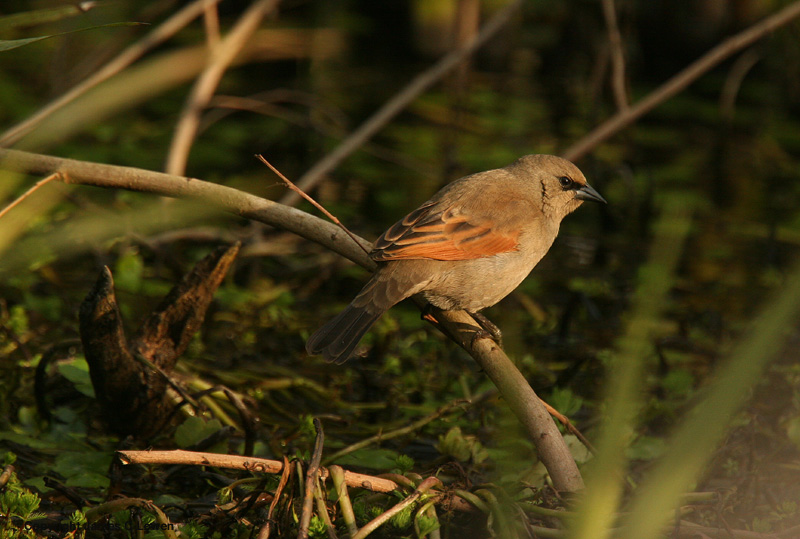
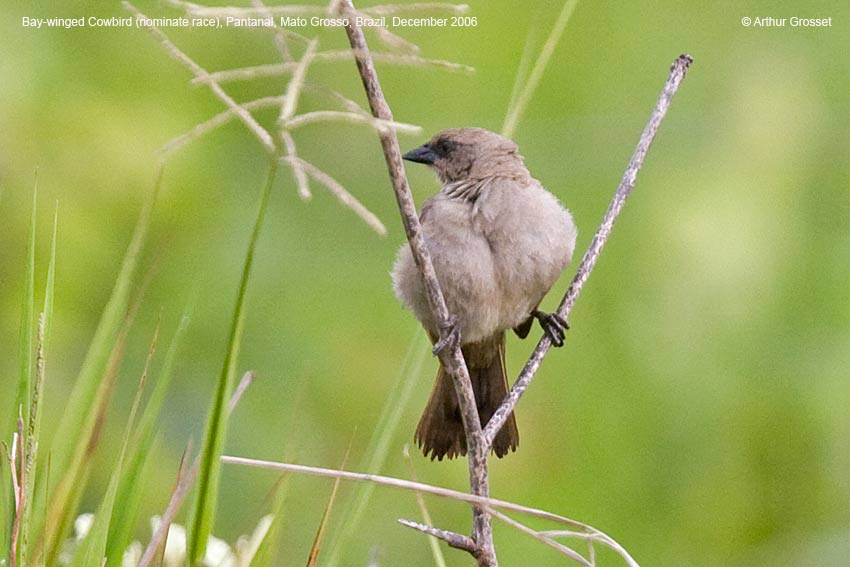
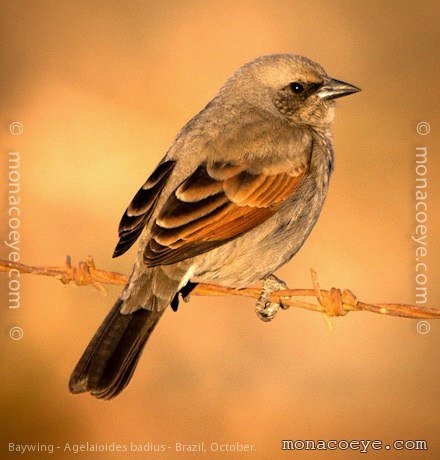
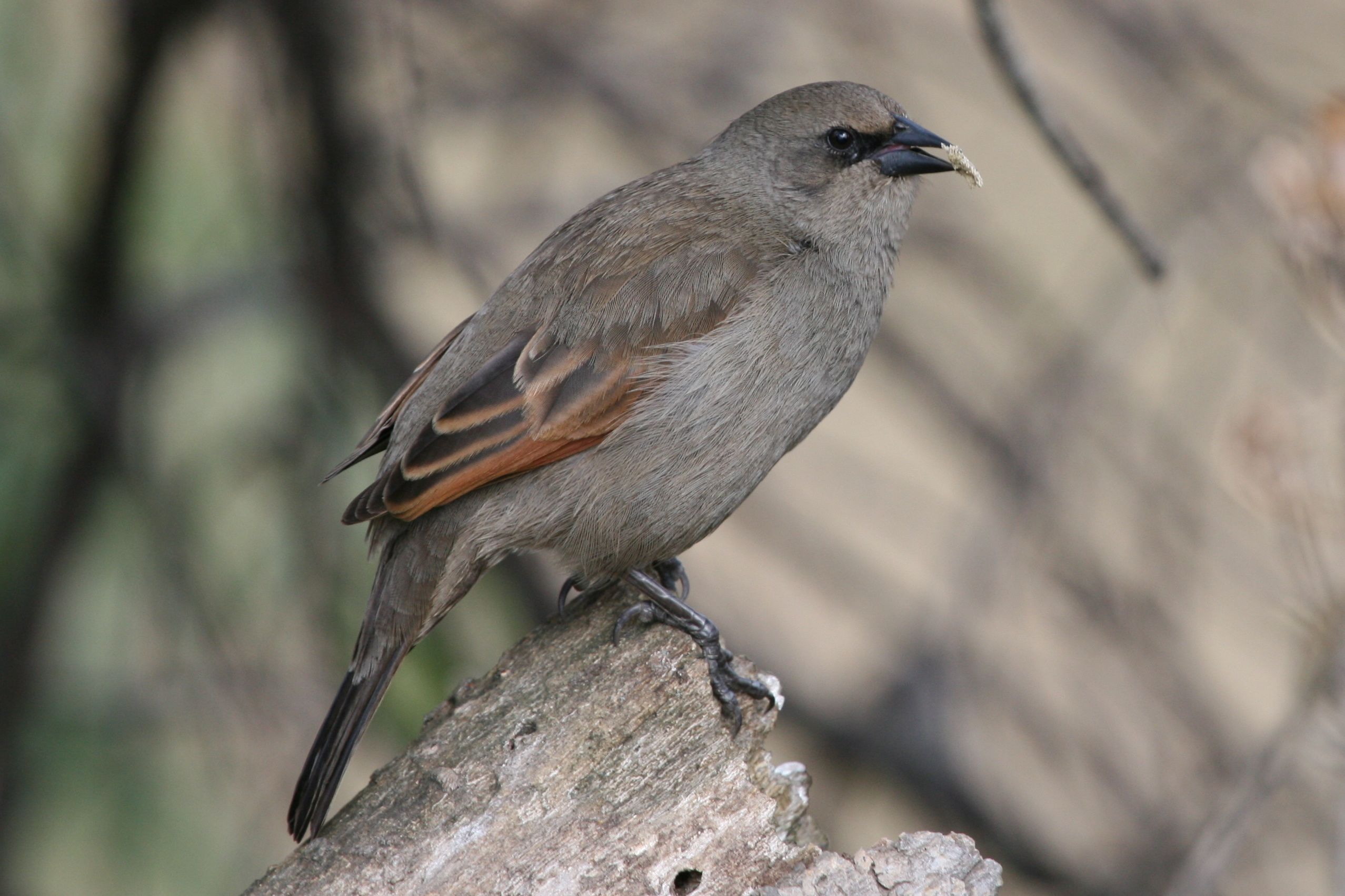
 Animalia Life
Animalia Life